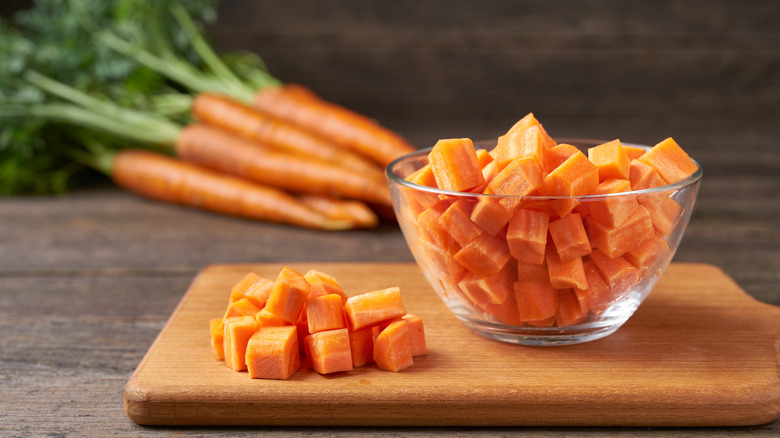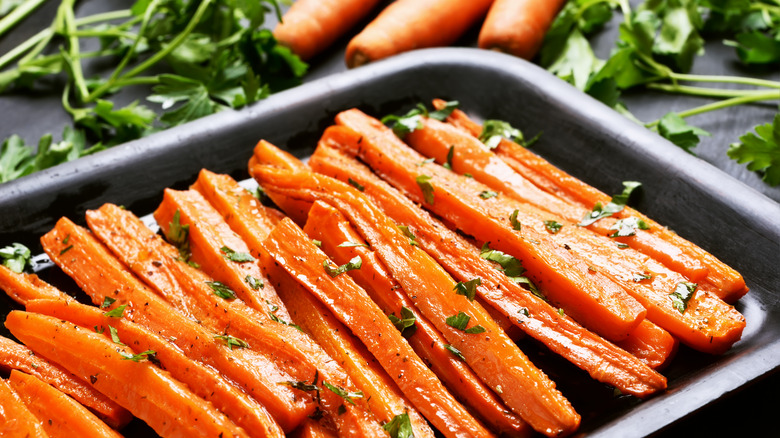The Underrated Vegetable That Makes A Mean Gnocchi
Light, pillowy, and tender gnocchi are among the top contenders for cozy, comforting Italian dishes. Not only do these delightfully decadent potato dumplings make a great vehicle to showcase almost any sauce you're craving, but you can also choose to either pan-fry or boil them to achieve an even greater range of flavor and textual experiences. Gnocchi is almost too easy not to make, and it allows home chefs to experiment with the full spectrum of Italian flavors, cultivating a greater understanding of their palate and personal preferences.
But opportunities for creativity don't stop with choosing your cooking method and sauce — you can also swap the traditional potato for another vegetable to further expand the possible flavors and textures gnocchi can take on — and while cauliflower is the traditional go-to, it isn't your only option. When prepared the right way, sweet potato, beets, broccoli, or even pumpkin have the potential to become great gnocchi. But with its subtle sweetness, hearty texture, and delightful pop of color, the fact that more people aren't using carrots to make gnocchi is bordering on criminal. And we're here to change that.
Why carrots make such a great potato alternative
There are a few reasons you may want to swap the classic potato for carrots next time you make gnocchi. Maybe you're looking to increase the nutrients of your dish. Carrots are high in antioxidants and are a great source of potassium, vitamin A, and beta-carotene. But even if you're not trying to get an extra hit of nutrients, the color and flavor carrots add to gnocchi are reason enough to give them a shot. They add a subtle sweetness that pairs well with a variety of sauces.
And if you're worried about disrespecting traditional recipes from the great chefs of Italian cuisine, fear not. This modification is perfectly in line with the tradition of gnocchi, which dates back to — at least — the Renaissance and has been modified to accommodate the local agriculture and availability of ingredients for almost as long. In Piedmont, the local variation uses ricotta and greens like spinach, swiss chard, or field nettles, depending on what is available. And pumpkin gnocchi may predate the more well-known potato dumpling since potatoes weren't introduced to Italy until the 1600s. So don't let the purists get you down — try substituting potatoes for carrots, or experiment with sweet potato gnocchi!
How to successfully substitute
In order to benefit from the full texture and flavor potential of this ingredient, without fundamentally changing the texture of your gnocchi, you'll need to deviate a bit from the usual instructions. Since carrots contain more moisture and less starch than potatoes, you'll want to roast them rather than boiling them. Doing so not only allows you to remove excess moisture while cooking — but also allows you to create more flavorful gnocchi. This is because, as water content is reduced, the other flavors of the carrot become more prominent. The Maillard reaction also occurs during roasting, changing the proteins and sugars in whatever is being cooked and resulting in the darker color and enhanced sweetness we expect of roasted vegetables.
Once your carrots are cooked, mash them using a vegetable ricer or any other tool that suits you. If the resulting mash still seems a little too moist, transfer it back to a pan (either in the oven or on the stovetop) and continue cooking for a few minutes, stirring periodically until the excess liquid has evaporated. The goal is to avoid using too much flour to create your dough – this will also diminish flavor. Once done, you can resume the directions for your favorite recipe, or combine two parts roasted carrot mash with one part flour and one part ricotta. Then shape your gnocchi and cook to your liking!



